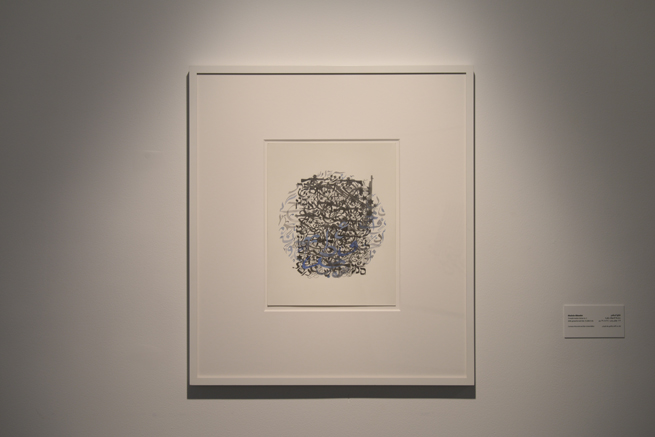
Transformation Series no. 5, 2009
Shahzia Sikander
Transformation Series no. 5, 2009
Gouache and ink
71.1 x 63.5 cm
Installation view
Photo by Alfredo Rubio
search


Shahzia Sikander
Transformation Series no. 5, 2009
Gouache and ink
71.1 x 63.5 cm
Installation view
Photo by Alfredo Rubio
While visiting Sharjah in August 2012, I toured a dilapidated cinema in the town of Khorfakkan. The building is full of character but in a state of decay, dying a slow death. In the United Arab Emirates, where there is so much new development, this stagnating space is an anomaly.
I returned to the cinema in December, when I met its sole guard. A native of Pakistan, he came to Sharjah in 1976 to help build the theatre, which was designed by architects and engineers from Karachi after Pakistani cinema architecture of the 1960s and 1970s. He, rose through the ranks from labourer to a manager, had lived in the cinema since his arrival.
The building is his life, his love – his existence is so intricately intertwined with it, and its imminent death will close a chapter in his life’s labour.
But he spoke of it as if it were still alive and functional, unable to see the layers of dust and decay around him, a sole survivor held captive to a dream. I ended up weaving this unexpected story into my work. In the photographs, you see the caretaker watching the faded screen as I project my drawings upon it, transforming the space and bringing the cinema back to life.
The title phrase comes from a ghazal by the nineteenth-century poet Ghalib. In the spirit of his poetry, which is multidimensional and contains multiple meanings, the title is open to interpretation.
2013
This project was part of Sharjah Biennial 11
Shahzia Sikander
2009
Gouache and ink
71.1 x 63.5 cm
Installation view
Photo by Alfredo Rubio
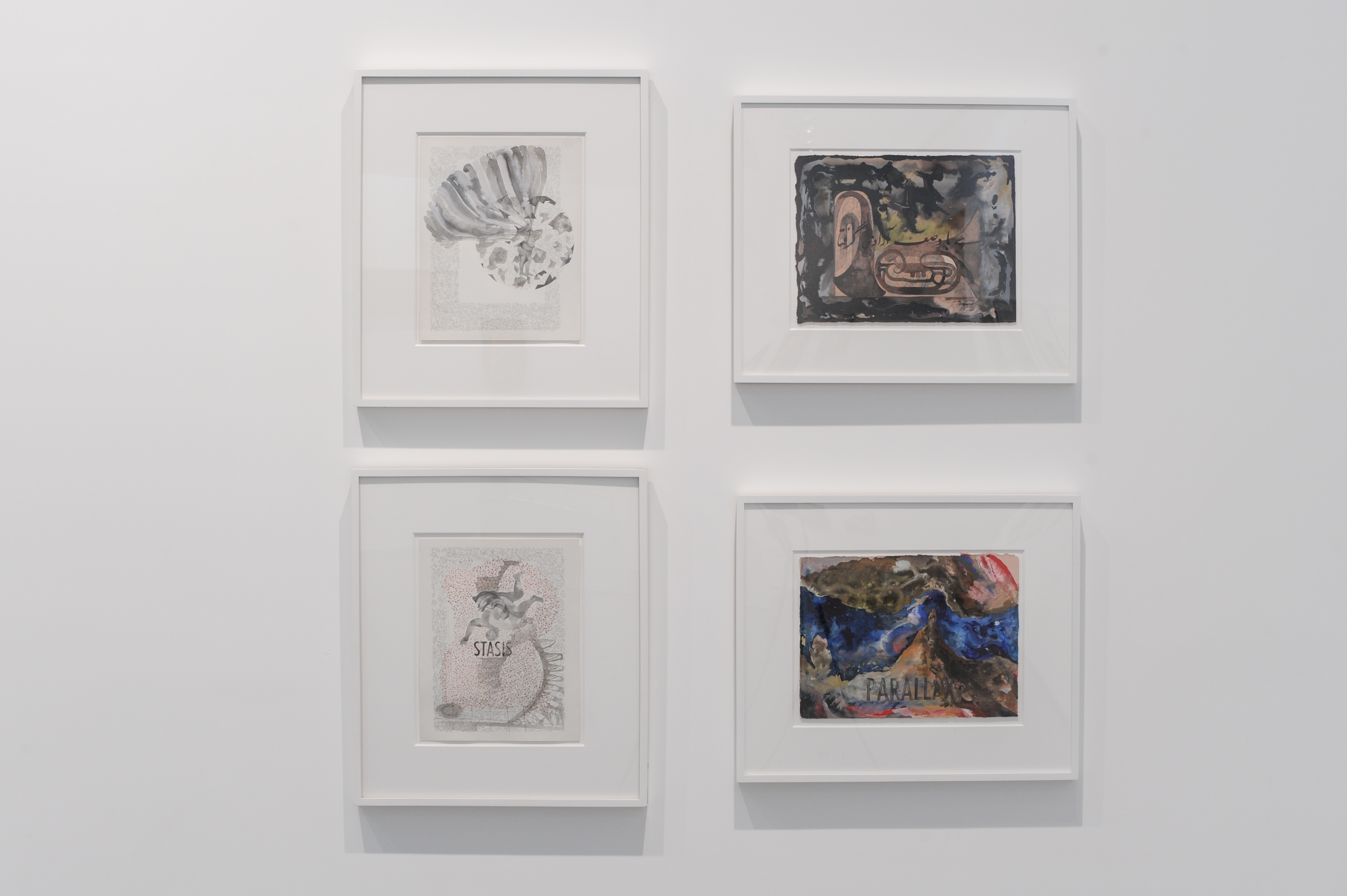
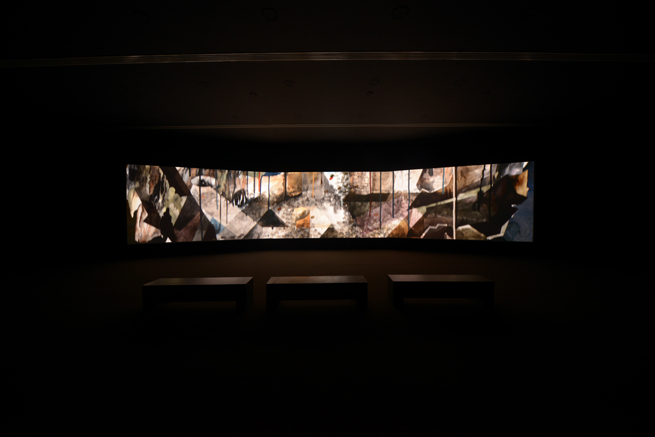
Shahzia Sikander’s practice creates an interpretive and critical dialogue with the history and provenance of Indo-Persian miniature painting.
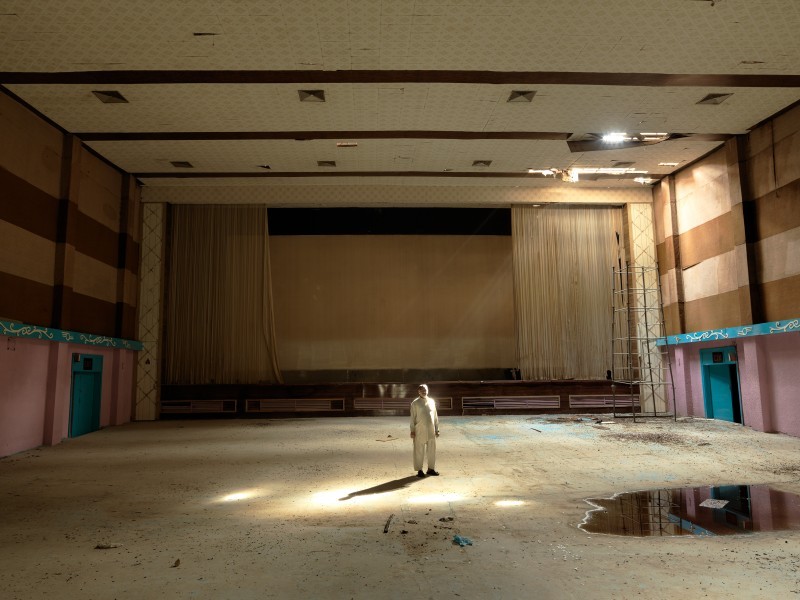
In the photographs, you see the caretaker watching the faded screen as I project my drawings upon it, transforming the space and bringing the cinema back to life.
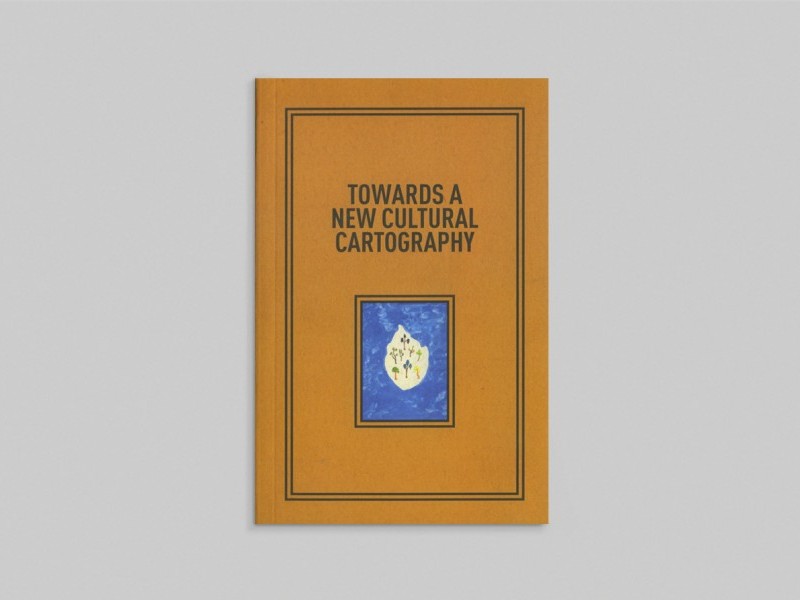
This publication takes as its starting point Yuko Hasegawa’s curatorial concept for Sharjah Biennial 11: Re:Emerge – Towards a New Cultural Cartography and March Meeting 2013.